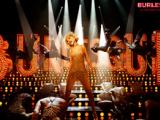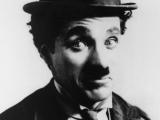In the late 1950s...
burleszk
burleszk/burlesque:
- Groteszk zenemű. Bachtól Bartókig több klasszikus is írt ilyen tréfás művet.
- Kacagtató bohózat, tréfa. Vándorkomédiások, cirkuszok, varieték, kabarék műsoraiban kezdődött, de teljes kibontakozásához a film teremtette meg a lehetőséget.
Legnagyobb, máig felejthetetlen alakjai (pl. „Stan és Pan”, majd Chaplin) a némafilm korszakában, az 1900-as évek elején teljesedtek ki. - A zenére épülő komikus burleszk a „zenebohócok” szakterülete. Hogy nevetni tudjunk rajtuk, ahhoz nemcsak gegek, hanem az előadó zenei felkészültsége, hangszeres tudása is szükséges.
- Zeneszámok parodisztikus előadása, zenészek kifigurázása.
A zene gazdag eszköztára számtalan lehetőséget kínál a komikus előadásmódra.
A zenei paródia -több közös jellemző ellenére- nem azonos a burleszkkel. - A varieté egyik fajtája.


